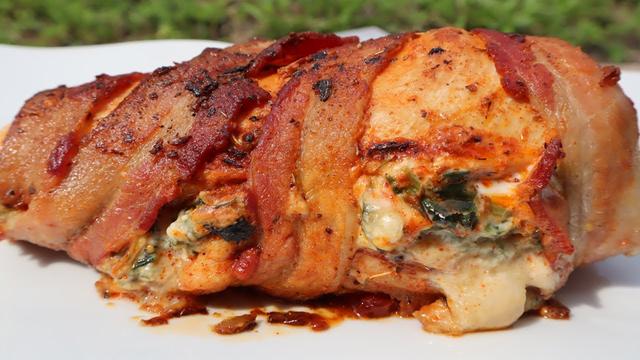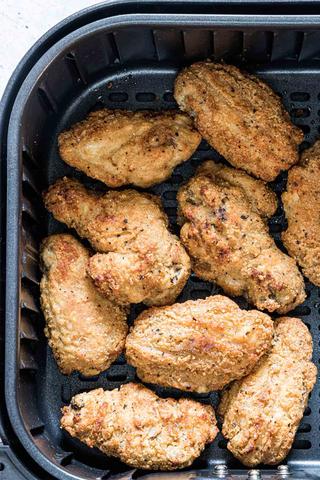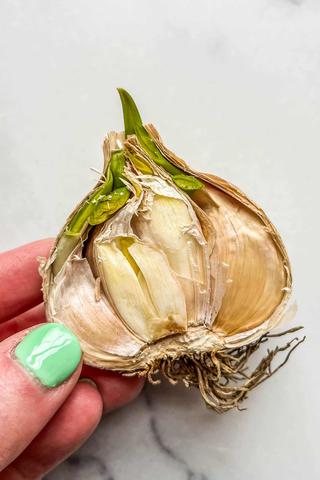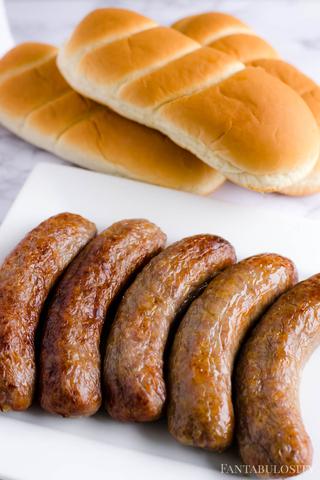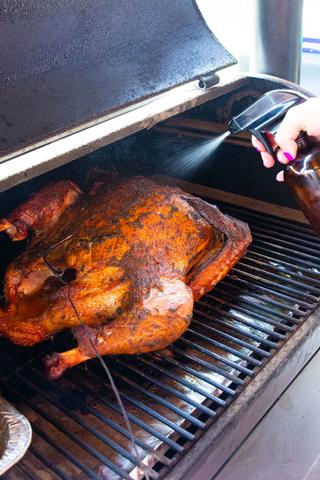
“Discover the unbeatable flavor of Turkey on a Pellet Grill. Elevate your grilling game with this innovative cooking method that infuses rich smoky goodness into every bite. Whether you’re a seasoned pitmaster or a grilling enthusiast, experience the perfect balance of tenderness and smokiness in your Thanksgiving centerpiece or any special occasion. Master the art of pellet grilling and delight your guests with mouthwatering turkey like never before!”
Do I need a smoker for smoked turkey?

No, you do not need a smoker specifically for smoking turkey. You can use a gas grill, charcoal grill, electric smoker, or any other type of grill that allows for the addition of wood smoke and the maintenance of consistent temperatures with indirect heat.
However, if you are looking for recommendations for the best smokers, you can check out the website’s recommendations.
It is important to note that the size of your turkey and the space available in your smoker or grill are factors to consider. Smokers smaller than 18″ may not be able to fit a full-size turkey. Typically, pellet grills are large enough to handle any size of turkey.
For the best results, it is recommended to use a 10 to 12 pound turkey, which can feed 7 to 8 people. Larger turkeys may lead to food safety issues if they do not reach an internal temperature of 140°F within 4 hours. It is also important to brine your turkey before smoking it as it adds flavor and helps keep it juicy. The brine process should be done for at least 24 hours before cooking.
To ensure that your smoked turkey is cooked properly, it is recommended to use a digital meat thermometer to monitor the internal temperature. The breast should reach an internal temperature of 165°F before serving.
Other tips include not stuffing the turkey as it may slow down the cooking process and choosing the right type of wood chips for smoking based on your desired flavor. It is also important to control the temperature inside your grill and maintain a steady temperature of around 300°F during the cooking process.
Overall, smoking a turkey can take some time and effort but the results are well worth it in terms of flavor and tenderness.
What Size Turkey Do I Need for Smoked Turkey?
When it comes to smoking a turkey, it’s important to consider the size of the bird. For the best results, it’s recommended to use a 10 to 12 pound turkey, which can feed around 7 to 8 people. Using a larger turkey may lead to food safety issues, as the turkey must reach an internal temperature of 140°F within 4 hours to prevent harmful bacteria growth.
To ensure proper air circulation and cooking, it’s also important to have a smoker that is large enough to accommodate the size of your turkey. Smokers smaller than 18″ may not be able to fit a full-size turkey, so it’s important to check the size of your smoker before starting the smoking process.
If your smoker is not big enough for a whole turkey, you can still enjoy smoked poultry by trying out a smoked whole chicken recipe instead.
Overall, smoking a fresh turkey can result in a juicy and flavorful dish with crispy skin. By following the steps mentioned in this recipe and using the right equipment, you can successfully smoke a delicious turkey outside of Thanksgiving season.
Preparing the Turkey for the Smoker
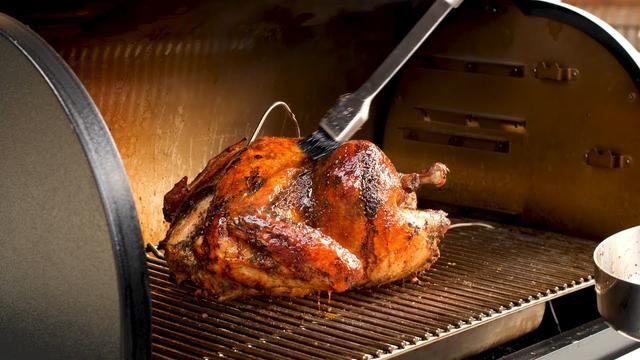
Before smoking the turkey, it is important to prepare it properly. Start by cleaning the turkey and removing any giblets. Then, submerge the turkey in a brine mixture for 24 hours to add flavor and moisture. Make sure the turkey is completely submerged and store it in the refrigerator during this time.
After the brining process is complete, remove the turkey from the brine, rinse it off, and pat it dry with paper towels. Let the turkey rest in the refrigerator for an additional hour before smoking.
When smoking a turkey, maintaining a consistent temperature is key. Preheat your smoker to 300°F and place the turkey on the smoker rack. Use a meat probe to monitor the internal temperature of the breast, aiming for 160°F.
After about 1.5 hours of smoking, rotate the turkey to ensure even cooking. Continue monitoring the temperature until it reaches 160°F in the breast and 165°F in the thigh. This should take around 3-4 hours for a 12-pound turkey.
Once cooked, remove the turkey from the smoker and let it rest until it reaches an internal temperature of 165°F in all parts. This resting period allows juices to redistribute and ensures a juicy and tender smoked turkey.
- Invest in a digital meat thermometer to accurately monitor temperatures throughout cooking.
- Avoid stuffing the turkey as it can slow down cooking time and increase risk of bacteria growth.
- Select wood chips that complement turkey’s natural flavors such as cherry wood or maple wood.
- Maintain a consistent grill temperature of 300°F during the smoking process.
Smoked Turkey Brine Ingredients
– 1 gallon of water
– 1 cup kosher salt
– 1/2 cup brown sugar
– 1/4 cup soy sauce
– 4 cloves garlic, crushed
– 2 tablespoons black peppercorns
– 2 bay leaves
To prepare the brine for your smoked turkey, start by combining all the brine ingredients in a clean 5-gallon pail. Mix well with a large wooden spoon until the salt and sugar are fully dissolved.
Clean your turkey thoroughly and make sure to remove the giblets. Once cleaned, submerge the turkey in the brine, ensuring that it is completely submerged. If necessary, place a weight on top of the turkey to keep it submerged.
Store the pail with the turkey and brine in your refrigerator for 24 hours. After the first 12 hours, turn the turkey 180 degrees to ensure even brining.
After the full 24-hour brining period is complete, remove the turkey from the brine and rinse it under cold water. Pat dry with paper towels and store in the fridge for an additional hour before smoking.
Turkey Brine Equipment
To brine a turkey, you will need the following equipment:
- A clean 5-gallon pail or a very large Ziploc bag
- A knife to crush garlic cloves
- A smoker (such as a pellet grill/smoker, charcoal grill, kamado, electric smoker, or offset smoker)
- Canola oil for coating the turkey
1. Skin the garlic cloves and use a knife to crush each clove.
2. In the clean 5-gallon pail, add all the brine ingredients together and mix well with a large wooden spoon.
3. Clean your turkey prior to brining and make sure the giblets are removed.
4. Submerge the turkey in the pail of brine, ensuring it is completely submerged.
5. Store the pail in your refrigerator for 24 hours, turning the turkey 180 degrees after the first 12 hours.
6. After the 24-hour brine is complete, remove the turkey from the brine, rinse it, and pat it dry with paper towels. Store it in the fridge for 1 hour before smoking.
Remember to use a digital meat thermometer to ensure your smoked turkey reaches an internal temperature of 165°F before serving. Avoid stuffing the turkey and choose your preferred wood chips for smoking. Control the temperature inside your grill to maintain a consistent temperature of 300°F throughout the cooking process.
Note: The recommendations provided are based on personal preferences and experiences mentioned in the topic information.
Turkey Brine Ingredients
– 1 gallon water
– 1 cup kosher salt
– 1 cup brown sugar
– 1/2 cup soy sauce
– 1/4 cup Worcestershire sauce
– 4 cloves garlic, crushed
In a clean 5-gallon pail or a very large Ziploc bag, mix together all the brine ingredients with a large wooden spoon. Clean the turkey and remove the giblets. Submerge the turkey in the brine, ensuring it is completely covered. Store in the refrigerator for 24 hours, flipping the turkey after 12 hours to ensure even brining.
Turkey Brine Instructions
To prepare the turkey brine, start by cleaning a 5-gallon pail that is only used for food or use a very large Ziploc bag. In the clean pail, add all the brine ingredients together, including crushed garlic cloves, and mix well with a large wooden spoon.
Before placing the turkey in the brine, make sure to clean it thoroughly and remove the giblets. Submerge the turkey in the pail of brine, ensuring that it is completely submerged. If using a Ziploc bag, place the turkey inside and pour the brine over it before sealing tightly.
Store the turkey in your refrigerator for 24 hours, turning it 180 degrees after the first 12 hours. This will help ensure even distribution of flavors throughout the bird.
After the 24-hour brining process is complete, remove the turkey from the brine and rinse it under cold water. Pat dry with paper towels and store in the fridge for an additional hour before smoking.
Note: The brining process adds flavor and moisture to the turkey, making it more delicious and tender when smoked.
How Long Does It Take to Smoke a Turkey?
Smoking a turkey can take some time, but the results are definitely worth it. The cooking time can vary depending on the size of your turkey and the temperature you’re smoking it at. Generally, smoking a turkey at 300°F will take about 15-20 minutes per pound. So, for a 12-pound turkey, you can expect to smoke it for around 4 hours.
It’s important to invest in a digital meat thermometer to ensure that your turkey reaches the proper internal temperature. A smoked turkey should reach an internal temperature of 165°F in the breast before being served. Keep in mind that the turkey will continue to cook after being taken off the smoker, so you can remove it when it reaches around 155°F and let it rest until the internal temperature reaches 165°F.
Remember not to stuff the turkey as this can cause it to cook slower and potentially lead to bacteria growth. Instead, make your stuffing separately in the oven.
Choosing the right type of wood for smoking is also important. Cherry wood, alder wood, and maple wood are great options that complement a turkey’s natural flavors.
Lastly, maintaining a consistent grill temperature of 300°F is key. This may require some monitoring and adjustments if you’re using a charcoal grill or other types of smokers.
Overall, smoking a turkey takes some time and effort, but with proper preparation and attention to detail, you can achieve a delicious and flavorful smoked turkey that will impress your guests.
4 Tips to Smoking the Entire Turkey
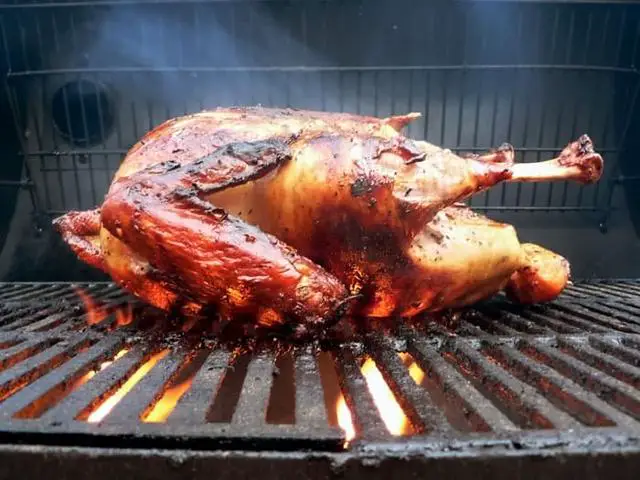
4 Tips to Smoking the Entire Turkey
1. Use a digital meat thermometer: To ensure that your turkey is cooked to perfection, it’s important to use a digital meat thermometer. This will help you monitor the internal temperature of the turkey and prevent overcooking or undercooking. Aim for an internal temperature of 165°F in the breast before serving.
2. Avoid stuffing the turkey: While stuffing may be a traditional part of roasting a turkey, it’s best to avoid stuffing when smoking a turkey. Stuffing can slow down the cooking process and increase the risk of bacteria growth. Instead, make your stuffing separately in the oven.
3. Choose your wood chips wisely: The type of wood you use in your smoker can greatly impact the flavor of your smoked turkey. Opt for cherry wood, alder wood, or maple wood as they complement the natural flavors of turkey. Avoid using hickory, as its strong flavor may overpower the subtle taste of the turkey.
4. Maintain consistent grill temperature: It’s crucial to maintain a consistent grill temperature of 300°F throughout the smoking process. If you’re using a charcoal grill with wood chunks, regularly check and adjust the top and bottom valves to control the temperature. Windy days may require extra attention to temperature control.
By following these tips, you’ll be able to smoke a juicy and flavorful whole turkey that will impress your guests. Remember to invest in a digital meat thermometer for accurate temperature monitoring and choose your wood chips wisely for optimal flavor infusion. Happy smoking!
Smoked Turkey Recipe
Smoking a fresh turkey leads to a juicy, delicious dish and is a great excuse to cook outside. You don’t have to wait until Thanksgiving to take your bird to the smoker. Smoked turkey can be more flavorful and tender compared to a roasted turkey because of the longer cooking time and the flavors infused through the smoke and brine. My favorite part of a smoked turkey is the crispier skin.
We loaded the steps in this smoked turkey recipe below with information to help make your smoked turkey a success. Smoking a whole turkey may take a little more time than roasting but the results are well worth the effort. Despite the name smoked turkey, you can use your gas grill, charcoal grill, an electric smoker, or any grill that you have on deck for this smoked turkey recipe. You just need one where you can add in the element of wood smoke and maintain consistent temperatures with indirect heat.
For this turkey, I’m using my Yoder YS640s pellet grill. It holds temps really well and can easily fit a large, whole turkey. It’s easy to use and with the onboard WIFI, we can keep an eye on our bird from anywhere during the cook. Many people struggle with temperature control when smoking meats, but this has a digital control board that ensures you can keep the temperature consistent when smoking turkey.
There are lots of options out there, so start by checking out our recommendations for the best smokers. The other key thing to keep in mind is the size of your turkey, as it needs enough space around it so air can circulate properly. You likely won’t be able to fit a full-size turkey on smokers smaller than 18″. Typically pellet grills are large enough to handle any size of turkey.
Smoker not big enough? Checkout our smoked whole chicken recipe instead.
For the best smoked turkey, it’s best to use a 10 to 12 pound turkey, which feeds 7 to 8 people. A larger turkey may lead to food safety issues, as a turkey must reach 140°F within 4 hours. Harmful bacteria starts to multiply as meat stays in the temperature danger zone (40 – 140°F) for over 4 hours. Remember the 4-hour window for smoked meats.
I always brine my turkey whether I’m smoking it or cooking it in the oven. Turkey is a lean meat that doesn’t produce a lot of natural flavors when compared to beef. A brine helps add so much flavor to a turkey, so I believe this is a must for any turkey cook. Give yourself two days of brine time before the day of the cook.
I have to give a shout out to my mom for this recipe. She’s used it for decades and it’s always a family favorite.
2. In the clean 5-gallon pail, add all the brine ingredients together and mix well with a large wooden spoon.
3. Clean your turkey and make sure the giblets are removed.
4. Submerge the turkey in the pail of brine. Do your best to make sure the turkey is completely submerged.
5. Store in your refrigerator for 24 hours, turning the turkey 180 degrees after the first 12 hours.
6. After the 24 hour brine is complete, remove your turkey from the brine, rinse and pat dry with paper towels and store in the fridge for 1 hour.
The brine process is complete.
A smoked turkey must reach an internal temperature of 165°F in the breast before being served. Smoking at 300°F takes about 15 – 20 minutes per pound. For a 12-pound turkey with no stuffing, plan on smoking the bird for around 4 hours before you hit this temperature in the turkey breast.
For more of a breakdown on cooking times for various turkey sizes at different temperatures, Epicurious has a great article. For this cook we are going with 300°F for around 4 hours.
1. Invest and use a digital meat thermometer. We talk about temperatures a lot here because the safest way to cook meat is to use temperature checks during your cooking process. A meat thermometer reads quickly and accurately so you’re not guessing when your turkey is done. Keep in mind for smoking a turkey it will continue to cook after being taken off the smoker. You’ll get a smoky flavor and avoid a dry overdone turkey if you smoke the turkey to an internal temperature of 155°F. Let the turkey rest until the probe in the turkey breast reaches 165°F.
2. Don’t stuff the turkey. It’s critical that the inside of your turkey reaches a certain temperature in a period of time to avoid bacteria growth. Stuffing causes the bird to cook slower. Instead, make your stuffing in the oven. You’re welcome to put the stuffing in the turkey cavity after they’ve both been cooked separately for presentation purposes for your holiday meal.
3. Choose your type of wood. The type of wood you use in your smoker affects the flavor of your smoked turkey. Cherry wood, alder wood, and maple wood complement a turkey’s natural flavors. Although hickory is frequently used with barbecues, the deep strong flavor may overwhelm the subtle turkey flavors.
4. Control the temperature inside your grill. The goal is to maintain a grill temperature of 300°F. If you are not using a Pellet Grill, managing a perfect 300°F temp can be a challenge. If you are using a charcoal grill with wood chunks, you will need to watch the temperature regularly and adjust your top and bottom valves.
After you’ve kept your bird in the smoked turkey brine for 24 hours, it is time to move on to the actual smoking part of the cook. This is the easiest part and since we are not adding any stuffing to the turkey, the time to cook will only be around 3 to 4 hours with a 12lbs turkey.
2. Truss the turkey by tying the legs together and propping the wings behind the back as shown.
4. Once the smoker hits 300F, place your turkey in the smoker and attach your meat probe into the breast of the turkey.
5. After about 1.5 hours, I will check the turkey and turn it around to make sure it is getting cooked evenly. Rotate again after another 1 to 1.5 hours.
6. Once the turkey temps about 160F in the breast and 165F in the thigh, we are pretty much done. I know I didn’t say 165F, but according to the FDA, if your turkey is at 160F for a minimum of 26.1 seconds, it is safe to eat.
It takes a lot of time to make a great turkey but you will notice how much more juicy and tender it is and the smoker gives it a nice flavor.
The brine makes the biggest difference for any turkey. When the turkey is carved, make a broth out of the leftover turkey because the smoky sweet flavor makes for amazing stock.
Garlic isn’t technically an herb, but you’ll see we’re using cloves instead of garlic powder. That’s because they’re fresher and easier to balance with the natural flavor of the turkey meat without overwhelming it.
If you’re using other ingredients–many recipes call for fresh sage, fresh thyme, or fresh rosemary–stick with fresh herbs when you can to get t
Equipment Needed
– Clean 5-gallon pail or a very large Ziploc bag
– Smoker (Pellet Grill/Smoker, Charcoal, Kamado, Electric, or Offset)
– Canola oil
– Knife for crushing garlic cloves
– Digital meat thermometer
1. In a clean 5-gallon pail, add all the brine ingredients together and mix well with a large wooden spoon.
2. Clean your turkey and make sure the giblets are removed.
3. Submerge the turkey in the pail of brine, ensuring it is completely submerged.
4. Store the turkey in your refrigerator for 24 hours, turning it 180 degrees after the first 12 hours.
5. After the brine is complete, remove the turkey from the brine, rinse it, and pat it dry with paper towels. Store it in the fridge for 1 hour.
1. Preheat your smoker to 300°F.
2. Truss the turkey by tying the legs together and propping the wings behind its back.
3. Coat the turkey with canola oil to achieve a golden brown skin and help the rub stick to it.
4. Crush garlic cloves and spread them evenly over the turkey’s skin.
5. Once your smoker reaches 300°F, place your turkey inside and attach a meat probe into its breast.
6. After about 1.5 hours of smoking, check on and rotate the turkey to ensure even cooking.
7. Continue smoking until the turkey reaches an internal temperature of 160°F in the breast and 165°F in the thigh.
8. Remove the turkey from the smoker and let it rest until its internal temperature reaches 165°F in the breast.
Note: This recipe is for a 10 to 12 pound turkey, but cooking times may vary based on size and smoker type. Always use a digital meat thermometer to ensure your turkey is cooked to a safe internal temperature.
Ingredients
– 10 to 12 pound turkey
– Brine ingredients:
– 1 gallon water
– 1 cup kosher salt
– 1/2 cup brown sugar
– 1/2 cup soy sauce
– 10 cloves garlic, crushed
– 2 tablespoons black peppercorns
– 2 bay leaves
– Canola oil for coating the turkey’s skin
Instructions
1. In a clean 5-gallon pail or a very large Ziploc bag, add all the brine ingredients together and mix well with a large wooden spoon.
2. Clean your turkey and make sure the giblets are removed.
3. Submerge the turkey in the brine, ensuring it is completely submerged.
4. Store the turkey in your refrigerator for 24 hours, turning it 180 degrees after the first 12 hours.
5. After the 24-hour brine is complete, remove the turkey from the brine, rinse it, and pat it dry with paper towels. Store it in the fridge for 1 hour to allow any excess moisture to evaporate.
6. Preheat your smoker to 300°F.
7. Truss the turkey by tying its legs together and propping its wings behind its back.
8. Once the smoker reaches 300°F, place your turkey in the smoker and attach a meat probe into the breast of the turkey.
9. After about 1.5 hours, check on the turkey and turn it around to ensure even cooking. Rotate again after another 1 to 1.5 hours.
10. Once the turkey reaches an internal temperature of about 160°F in the breast and 165°F in the thigh (according to FDA guidelines), it is done cooking.
11. Remove the turkey from the smoker and let it rest until its internal temperature reaches a safe serving temperature of 165°F in both breast and thigh.
12. Carve and serve your delicious smoked turkey!
Note: It is important to use a digital meat thermometer to ensure that your turkey reaches the appropriate internal temperature for safe consumption.
Smoked Turkey Recipe with Brine
Smoking a fresh turkey leads to a juicy, delicious dish and is a great excuse to cook outside. You don’t have to wait until Thanksgiving to take your bird to the smoker. Smoked turkey can be more flavorful and tender compared to a roasted turkey because of the longer cooking time and the flavors infused through the smoke and brine. My favorite part of a smoked turkey is the crispier skin.
To start, it’s best to use a 10 to 12 pound turkey for this recipe, which feeds 7 to 8 people. A larger turkey may lead to food safety issues, as it needs enough space around it so air can circulate properly. Once you have your turkey, it’s important to brine it for maximum flavor. In a clean 5-gallon pail, mix together all the brine ingredients and submerge the turkey in the mixture. Store in the refrigerator for 24 hours, turning the turkey after 12 hours.
After the brining process is complete, remove the turkey from the brine and pat it dry with paper towels before storing it in the fridge for an hour. Now it’s time to smoke the turkey. Preheat your smoker or grill to 300°F. Truss the turkey by tying its legs together and propping its wings behind its back.
Once your smoker reaches 300°F, place the turkey inside and attach a meat probe into its breast. After about 1.5 hours, check on the turkey and rotate it for even cooking. Continue cooking until the breast reaches an internal temperature of about 160°F and thigh reaches 165°F.
Remember that using a digital meat thermometer is essential for accurate temperature readings during smoking. Let your smoked turkey rest until it reaches an internal temperature of 165°F in the breast before serving.
By following these steps, you’ll achieve a perfectly smoked turkey with a juicy and tender texture, flavorful skin, and delicious smoky taste. Enjoy your smoked turkey as the centerpiece of a memorable meal!
Equipment
– 5-gallon pail or very large Ziploc bag
– Smoker (such as a pellet grill, charcoal grill, electric smoker)
– Digital meat thermometer
– Canola oil
– Knife for crushing garlic cloves
Ingredients
– 10 to 12 pound turkey
– Brine:
– 1 cup kosher salt
– 1 cup brown sugar
– 4 quarts water
– 2 tablespoons black peppercorns
– 2 tablespoons whole coriander seeds
– 6 cloves garlic, crushed
– Handful of fresh herbs (sage, thyme, rosemary)
– Canola oil for coating the turkey
– Dry rub:
– 2 tablespoons kosher salt
– 2 tablespoons paprika
– 1 tablespoon black pepper
– 1 tablespoon garlic powder
– 1 tablespoon onion powder
Note: The measurements and ingredients can vary based on personal preference.
Smoked Turkey Rub Ingredients
The rub for this smoked turkey recipe is a simple blend of herbs and spices that adds flavor and enhances the natural taste of the turkey. Here are the ingredients you will need:
- 2 tablespoons kosher salt
- 1 tablespoon black pepper
- 1 tablespoon paprika
- 1 tablespoon dried thyme
- 1 tablespoon dried rosemary
- 1 tablespoon garlic powder
- 1 teaspoon onion powder
- In a small bowl, combine all the ingredients for the rub.
- Mix well to ensure that all the spices are evenly distributed.
- Rub the mixture all over your turkey, making sure to cover both the outside and inside of the bird.
- Cover the turkey with plastic wrap and refrigerate for at least 2 hours to allow the flavors to penetrate the meat.
This homemade rub is versatile and can be used on other meats as well. It adds a delicious savory flavor to any dish!
Instructions
Instructions:
1. Prepare the brine by combining all the brine ingredients in a clean 5-gallon pail and mixing well with a large wooden spoon.
2. Clean the turkey and remove the giblets.
3. Submerge the turkey in the brine, ensuring it is completely submerged.
4. Store the turkey in the refrigerator for 24 hours, turning it 180 degrees after the first 12 hours.
5. After the brining process is complete, remove the turkey from the brine, rinse it, and pat it dry with paper towels. Store it in the fridge for 1 hour.
6. Preheat your smoker to 300°F.
7. Truss the turkey by tying its legs together and propping its wings behind its back.
8. Once the smoker reaches 300°F, place the turkey inside and attach a meat probe into the breast of the turkey.
9. After about 1.5 hours, check on the turkey and rotate it to ensure even cooking. Repeat this rotation after another 1 to 1.5 hours.
10. Once the turkey reaches an internal temperature of about 160°F in the breast and 165°F in the thigh, it is done cooking according to FDA guidelines (at least 26.1 seconds at 160°F).
11. Remove the turkey from the smoker and let it rest until its internal temperature reaches 165°F in the breast.
12. Carve and serve your smoked turkey, saving any leftover drippings for gravy or stock.
Remember to invest in a digital meat thermometer for accurate temperature checks during cooking, avoid stuffing your turkey to ensure proper cooking times, choose wood chips that complement your desired flavor profile, and control your grill’s temperature to maintain a consistent heat source throughout smoking process.
Smoking the Turkey Instructions
1. After the 24 hour brine is complete, remove your turkey from the brine, rinse and pat dry with paper towels. Let it sit in the fridge for 1 hour to dry.
2. Preheat your smoker to 300°F. If using a pellet grill/smoker, add wood pellets to the hopper according to manufacturer’s instructions.
3. Coat the turkey with canola oil to give it a nice golden brown skin and help the rub stick.
4. In a small bowl, mix together garlic cloves (skin removed) and any other desired herbs or spices.
5. Rub the mixture all over the turkey, making sure to get into all the crevices and under the skin.
6. Place the turkey on the smoker rack breast-side up and insert a meat probe into the thickest part of the breast.
7. Smoke at 300°F for about 15-20 minutes per pound, or until internal temperature reaches 160°F in breast and 165°F in thigh.
8. Check on the turkey after about 1.5 hours and rotate it for even cooking. Repeat every 1-1.5 hours as needed.
9. Once desired temperature is reached, remove turkey from smoker and let it rest for at least 30 minutes before carving.
Note: Remember to use a digital meat thermometer to ensure accurate temperature readings throughout the cooking process.
Nutrition
Smoked turkey is a lean and healthy protein option. A 10 to 12 pound turkey can feed around 7 to 8 people, making it a great choice for gatherings or family meals. The longer cooking time and infusion of flavors through smoke and brine make smoked turkey more flavorful and tender compared to a roasted turkey.
It’s important to note that a larger turkey may pose food safety issues, as it needs to reach an internal temperature of 140°F within 4 hours to prevent bacterial growth. It’s recommended to use a digital meat thermometer to ensure the turkey reaches an internal temperature of 165°F in the breast before serving.
Turkey Tips for Your Holiday Meal
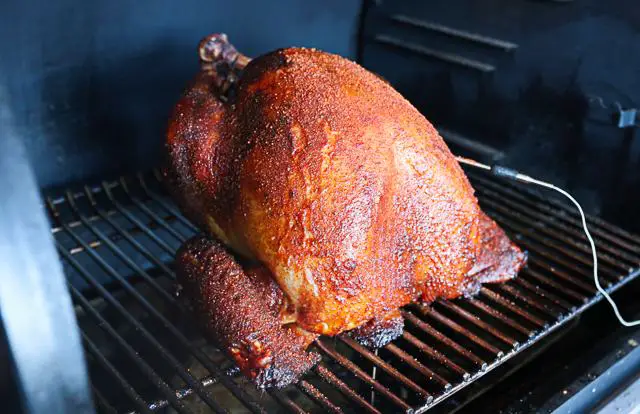
Smoking a fresh turkey can result in a juicy and delicious dish, perfect for any holiday meal. You don’t have to wait until Thanksgiving to enjoy a smoked turkey – it’s a great excuse to cook outside and try something different. The longer cooking time and the flavors infused through the smoke and brine make smoked turkey more flavorful and tender compared to a roasted turkey. Plus, the crispy skin is an added bonus.
When smoking a whole turkey, it’s important to choose the right equipment. You can use a gas grill, charcoal grill, electric smoker, or any grill that allows you to add wood smoke and maintain consistent temperatures with indirect heat. Make sure your smoker is big enough to fit the size of your turkey and allows proper air circulation.
Brining is essential for adding flavor to your turkey. Turkey is a lean meat that doesn’t have as much natural flavor as beef, so brining helps enhance its taste. Brine your turkey for at least 24 hours before cooking it. This will ensure that the flavors penetrate the meat and make it more tender.
Temperature control is crucial when smoking meats, so invest in a digital meat thermometer to ensure your turkey reaches the proper internal temperature of 165°F in the breast before serving. Avoid stuffing the turkey as it slows down cooking time and increases the risk of bacteria growth. Choose your wood chips wisely – cherry wood, alder wood, and maple wood complement the natural flavors of turkey.
Maintaining a grill temperature of 300°F is ideal for smoking a turkey. Use a trussing technique to tie the legs together and prop the wings behind the back for even cooking. Check on the turkey periodically during cooking and rotate it if necessary for even browning.
Once your smoked turkey reaches an internal temperature of 160°F in the breast and 165°F in the thigh, it is safe to eat. Let it rest until the probe reaches 165°F in the breast for maximum juiciness. Remember to save any leftover turkey drippings for making broth or gravy.
With these tips, you can enjoy a flavorful and juicy smoked turkey for your holiday meal.
Use Fresh Herbs
To ensure the best flavor in your smoked turkey, it’s recommended to use fresh herbs instead of dried ones. While dried herbs can still add some flavor, fresh herbs have a more vibrant and aromatic taste that will enhance the overall taste of your turkey. Fresh sage, thyme, and rosemary are commonly used herbs for smoking turkey as they complement the natural flavors of the meat without overpowering it. Using fresh herbs also allows you to balance the flavors more easily and create a well-rounded taste.
If you’re purchasing your Thanksgiving turkey from a local butcher, you may have the opportunity to get additional parts like turkey giblets. These parts are essential for making delicious gravy or using leftover smoked turkey in soups. The drippings from the turkey can be captured in an aluminum roasting pan or disposable roasting pan to make a flavorful gravy. If you’re unable to capture the drippings, using bone broth instead of regular chicken broth can provide a deeper and richer flavor to your gravy.
Smoking a turkey may seem intimidating at first, but it is definitely worth it in terms of flavor and texture. Smoking allows the flavors to penetrate into the meat while creating a crispy skin that locks in juices and keeps the turkey moist. Keeping your smoker at around 300 degrees Fahrenheit during the cooking process ensures that thicker parts of the bird cook evenly while allowing enough time for the wood chips to infuse their flavors.
Overall, smoking a turkey requires a bit more time and effort compared to roasting, but the results are well worth it. The longer cooking time and infusion of smoke and brine flavors make for a juicier and more flavorful dish. Whether you’re cooking for Thanksgiving or any other occasion, smoking a whole turkey is sure to impress your guests with its tender meat and crispy skin.
Go to Your Local Butcher
Smoking a fresh turkey can lead to a juicy and delicious dish that is perfect for cooking outside. While many people associate smoked turkey with Thanksgiving, you don’t have to wait until then to enjoy it. The longer cooking time and the infusion of flavors from smoke and brine make smoked turkey more flavorful and tender compared to a roasted turkey. One of the highlights of a smoked turkey is the crispy skin, which adds an extra layer of texture and flavor.
To smoke a turkey, you can use various types of grills or smokers, including gas grills, charcoal grills, electric smokers, or any grill that allows you to add wood smoke and maintain consistent temperatures with indirect heat. It’s important to ensure that your smoker has enough space to accommodate the size of your turkey, as proper air circulation is necessary for even cooking. Pellet grills are often large enough to handle any size of turkey. If your smoker is not big enough, you can try smoking a whole chicken instead.
Brining your turkey is essential for adding flavor and moisture. Turkey is a lean meat that doesn’t have as much natural flavor as beef, so brining helps enhance its taste. It’s recommended to brine your turkey for at least 24 hours before cooking. You can use a 5-gallon pail or a large Ziploc bag for brining. Make sure the turkey is completely submerged in the brine solution and refrigerate it during this time. After 24 hours, remove the turkey from the brine, rinse it off, pat dry with paper towels, and let it rest in the fridge for an hour before smoking.
A smoked turkey needs to reach an internal temperature of 165°F in the breast before it is considered safe to eat. Smoking at a temperature of 300°F typically takes about 15-20 minutes per pound of turkey. For a 12-pound turkey, you can expect to smoke it for around 4 hours. It’s crucial to use a digital meat thermometer to accurately monitor the temperature and ensure that your turkey is cooked properly. Avoid stuffing the turkey, as it can slow down the cooking process and increase the risk of bacterial growth. Choose wood chips that complement the natural flavors of turkey, such as cherry wood, alder wood, or maple wood.
Here are a few additional tips to make your smoked turkey a success:
- Invest in a digital meat thermometer for accurate temperature readings.
- Avoid stuffing the turkey to ensure proper cooking time and food safety.
- Choose the right type of wood chips to enhance the flavor of your smoked turkey.
- Maintain a consistent grill temperature of 300°F throughout the smoking process.
By following these tips and using quality ingredients, you can create a delicious and flavorful smoked turkey that will impress your family and friends.
Turn to Bone Broth
Smoking a fresh turkey can result in a juicy and delicious dish, with the longer cooking time and infusion of flavors from smoke and brine making it more flavorful and tender than a roasted turkey. The crispy skin is often a favorite part of a smoked turkey. You can use various types of grills or smokers to smoke your turkey, as long as you can add wood smoke and maintain consistent temperatures with indirect heat.
When smoking a whole turkey, it’s important to consider the size of your smoker or grill, as it needs enough space for proper air circulation. Pellet grills are typically large enough to handle any size of turkey. It’s recommended to use a 10 to 12 pound turkey for the best results, as larger turkeys may pose food safety issues if they don’t reach the required internal temperature within 4 hours.
Brining is highly recommended for adding flavor to the turkey, as it helps enhance the natural flavors of the lean meat. Give yourself two days for brining before cooking the turkey. After brining, rinse and pat dry the turkey before storing it in the fridge for an hour.
To ensure food safety, a smoked turkey must reach an internal temperature of 165°F in the breast before serving. Smoking at around 300°F takes about 15-20 minutes per pound, so plan on smoking a 12-pound turkey for approximately 4 hours. It’s important to use a digital meat thermometer to accurately determine when your turkey is done.
Avoid stuffing the turkey, as this can cause slower cooking and increase the risk of bacteria growth. Instead, make stuffing separately in the oven. The type of wood you use in your smoker will affect the flavor of your smoked turkey. Cherry wood, alder wood, and maple wood are good choices that complement the natural flavors of turkey.
Maintaining a grill temperature of 300°F is ideal for smoking your turkey. If using a charcoal grill, you’ll need to regularly monitor and adjust the temperature.
After brining, truss the turkey by tying the legs together and propping the wings behind the back. Place the turkey in the smoker at 300°F and use a meat probe to monitor its temperature. Rotate the turkey every 1.5 hours for even cooking. Once the breast reaches around 160°F and the thigh reaches 165°F, it’s safe to eat. Let the turkey rest until it reaches an internal temperature of 165°F in the breast.
Using fresh herbs like cloves, sage, thyme, or rosemary can enhance the flavor of your smoked turkey. If possible, get your turkey from a local butcher to include essential parts like giblets for making gravy or soup.
Overall, smoking a turkey requires time and effort but results in a juicy and flavorful dish with a crispy skin.
Smoked Turkey FAQs
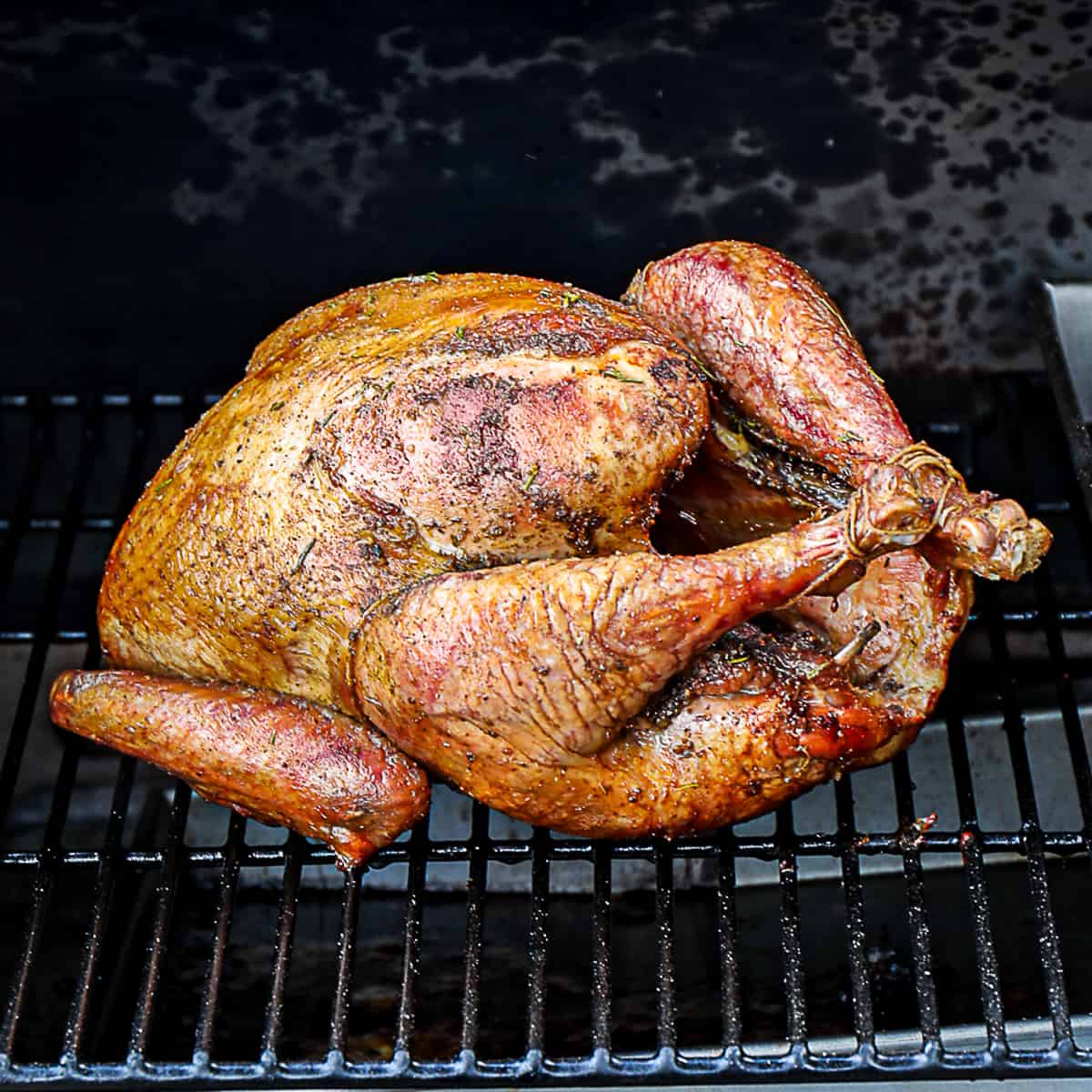
1. How long does it take to smoke a turkey?
Smoking a turkey at 300°F takes about 15-20 minutes per pound. For a 12-pound turkey, plan on smoking it for around 4 hours before it reaches the desired internal temperature of 165°F in the breast.
2. What is the best wood to use for smoking turkey?
Cherry wood, alder wood, and maple wood are great options for smoking turkey as they complement the natural flavors of the meat. Hickory, while commonly used in barbecues, may overpower the subtle flavors of the turkey.
3. Can I stuff the turkey when smoking it?
It is not recommended to stuff the turkey when smoking it as stuffing causes the bird to cook slower. It is safer to make your stuffing separately in the oven.
4. How do I control the temperature inside my grill when smoking turkey?
To maintain a grill temperature of 300°F, you will need to regularly monitor and adjust your grill’s top and bottom valves if using a charcoal grill with wood chunks. Pellet grills offer better temperature control and are recommended for smoking turkey.
5. How can I ensure that my smoked turkey is juicy and tender?
The key to a juicy and tender smoked turkey is brining it before cooking. Brining adds flavor and helps retain moisture in lean meats like turkey. It is recommended to brine your turkey for at least 24 hours before smoking.
6. Can I use a digital meat thermometer when smoking a turkey?
Absolutely! Using a digital meat thermometer ensures that you cook your turkey to the proper internal temperature of 165°F in the breast. This will help you avoid overcooking or undercooking the turkey.
Is it worth smoking a turkey?
Smoking a turkey is definitely worth it for those looking to add extra flavor and tenderness to their bird. Compared to roasting, smoking a turkey can result in a juicier and more flavorful dish due to the longer cooking time and infusion of flavors from the smoke and brine. The crispy skin that comes with smoking is also a favorite among many. While smoking may take more time than roasting, the end result is well worth the effort.
It’s important to note that you don’t have to wait until Thanksgiving to smoke a turkey. You can use various types of grills or smokers, such as gas grills, charcoal grills, electric smokers, or pellet grills like the Yoder YS640s used in this recipe. It’s crucial to have a grill that allows you to add wood smoke and maintain consistent temperatures with indirect heat. Pellet grills are often large enough to accommodate any size of turkey.
To ensure food safety, it’s recommended to use a 10 to 12 pound turkey for smoking. Larger turkeys may pose food safety issues if they do not reach an internal temperature of 140°F within 4 hours. Brining the turkey is also highly recommended as it adds flavor and helps tenderize the meat. The brine process usually takes two days before cooking the turkey.
Is it better to smoke a turkey at 225 or 250?
It is generally recommended to smoke a turkey at a temperature of 225°F. This lower temperature allows for a slower cooking process, which helps to ensure that the turkey stays moist and tender. However, smoking at 250°F is also a viable option and can result in a slightly faster cook time. Ultimately, the choice between 225°F and 250°F depends on personal preference and the specific equipment being used. Both temperatures can produce delicious smoked turkeys, so it’s up to the individual to decide which they prefer.
In conclusion, cooking turkey on a pellet grill offers a unique and flavorful experience. The indirect heat and smoky flavor imparted by the pellets result in moist and delicious meat. With its convenience and versatility, a pellet grill is an excellent choice for preparing a mouthwatering turkey dish.
Learn More About Grilling
If you want to learn more about grilling, check out these other helpful resources!


